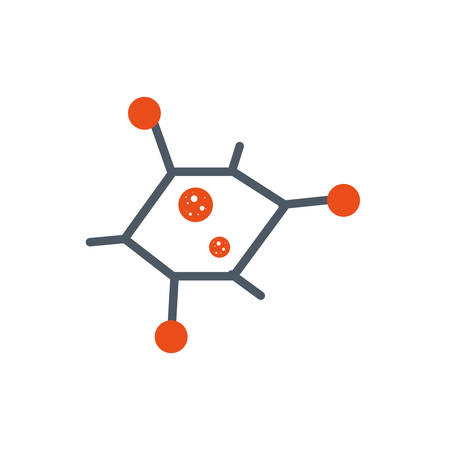Introduction to Omega-3 Fatty Acids
Omega-3 fatty acids are a group of polyunsaturated fats that play a pivotal role in maintaining human health. Recognised for their profound effects on cellular function and systemic wellbeing, omega-3s have garnered significant attention within the fields of nutrition and rehabilitation sciences. In the context of the British diet, the principal sources of these essential fatty acids include oily fish such as salmon, mackerel, sardines, and herring, as well as plant-based options like flaxseeds, chia seeds, walnuts, and rapeseed oil. Despite the traditional British preference for cod or haddock, public health initiatives have increasingly promoted the inclusion of oily fish in weekly meal plans to bolster omega-3 intake.
Biochemically, omega-3 fatty acids are categorised mainly into three types: alpha-linolenic acid (ALA), eicosapentaenoic acid (EPA), and docosahexaenoic acid (DHA). ALA is primarily found in plant sources, whereas EPA and DHA are abundant in marine products. These compounds are integral to cell membrane integrity, modulate inflammatory pathways, and contribute to neuroprotection. As the body cannot efficiently synthesise omega-3s de novo, dietary intake becomes essential for sustaining optimal physiological functions. Thus, understanding their sources and biological significance forms a critical foundation for exploring their impact on inflammation and rehabilitation outcomes in the subsequent sections.
2. Inflammation: Mechanisms and Clinical Relevance
Inflammation is a fundamental biological response to injury, infection, or harmful stimuli, serving as a protective mechanism that facilitates tissue repair and recovery. At its core, inflammation involves the activation of immune cells, the release of pro-inflammatory mediators (such as cytokines and eicosanoids), and increased blood flow to affected areas. However, while acute inflammation is essential for healing, chronic or unresolved inflammation can contribute to a range of health issues, including cardiovascular disease, arthritis, and impaired rehabilitation outcomes.
The Mechanisms Behind Inflammation
The inflammatory process unfolds in several stages:
| Stage | Description | Clinical Implication |
|---|---|---|
| Initiation | Tissue damage triggers immune system activation; release of histamines and cytokines. | Redness, heat, swelling, pain at site of injury. |
| Amplification | Recruitment of additional immune cells; production of inflammatory mediators. | Escalation of symptoms; potential for systemic involvement if unchecked. |
| Resolution | Anti-inflammatory signals promote tissue repair and dampen immune response. | Restoration of normal function; prevention of chronic inflammation. |
Clinical Relevance in the UK Context
Within the UK healthcare system, managing inflammation is a central concern in both acute care (such as post-surgical recovery) and long-term conditions (including rheumatoid arthritis and cardiovascular diseases). The NHS prioritises evidence-based interventions to control excessive inflammation, combining pharmacological treatments—such as non-steroidal anti-inflammatory drugs (NSAIDs)—with lifestyle modifications. Recent guidance increasingly recognises the importance of dietary factors, including omega-3 fatty acids, as adjuncts to traditional therapies.
The British Approach to Managing Inflammation
The perception and management of inflammation in the UK emphasise multidisciplinary collaboration. General practitioners often coordinate care with physiotherapists, dietitians, and specialist consultants to ensure holistic patient support. Education on recognising early signs of inflammation and adopting preventive strategies—such as balanced nutrition rich in anti-inflammatory components—is integrated into both clinical practice and public health campaigns.
Linking Inflammation to Rehabilitation Outcomes
Uncontrolled inflammation can hinder rehabilitation by delaying tissue healing and exacerbating pain. Therefore, effective management is pivotal for optimal recovery trajectories. Omega-3 fatty acids have emerged as a promising nutritional intervention within this context, offering potential to modulate inflammatory processes and improve patient outcomes—a theme explored in greater depth throughout this article.
![]()
3. Omega-3 Fatty Acids and Inflammatory Response
Omega-3 fatty acids, particularly eicosapentaenoic acid (EPA) and docosahexaenoic acid (DHA), have been widely researched for their regulatory effects on inflammatory processes. The scientific consensus indicates that omega-3s play a significant role in modulating inflammation at both cellular and systemic levels. This is of particular interest within the context of rehabilitation, where managing inflammation can directly influence recovery trajectories.
Biological Mechanisms Underpinning Omega-3s Anti-inflammatory Effects
Omega-3 fatty acids exert their anti-inflammatory actions through several interrelated pathways. Primarily, they compete with arachidonic acid—a precursor to pro-inflammatory eicosanoids—thereby reducing the synthesis of molecules such as prostaglandins and leukotrienes that drive inflammation. Additionally, EPA and DHA are converted into resolvins and protectins, which actively promote the resolution phase of inflammation, supporting tissue repair and homeostasis.
Evidence from British Population-Based Studies
Several large-scale cohort studies conducted in the UK, including data from the UK Biobank and the EPIC-Norfolk Study, have provided valuable insights into the relationship between omega-3 intake and markers of systemic inflammation such as C-reactive protein (CRP). These studies consistently report that individuals with higher dietary intakes of oily fish—an important source of omega-3s in traditional British diets—tend to exhibit lower levels of inflammatory biomarkers. Notably, research has highlighted regional differences within the UK, reflecting variations in dietary patterns across England, Scotland, Wales, and Northern Ireland.
Implications for Clinical Practice and Public Health Policy
The robust evidence base emerging from British research underscores the importance of incorporating omega-3-rich foods into rehabilitation nutrition strategies. From a public health perspective, recommendations from organisations such as the NHS advocate regular consumption of oily fish like mackerel, sardines, and salmon to harness these anti-inflammatory benefits. For clinicians working within the rehabilitation sector, understanding these mechanisms provides a scientific rationale for tailored dietary advice aimed at optimising recovery outcomes in inflammatory-driven conditions.
4. Dietary Habits and Omega-3 Intake in the UK
The dietary habits of the British public play a significant role in determining the levels of omega-3 fatty acids consumed, which, as established, have direct implications for inflammation and rehabilitation outcomes. In recent years, analyses of national consumption trends have revealed both progress and areas for improvement regarding omega-3 intake within the UK population.
National Trends in Omega-3 Consumption
Research indicates that despite widespread awareness of the health benefits associated with omega-3 fatty acids, actual intake remains below recommended levels for a substantial proportion of the UK populace. The National Diet and Nutrition Survey (NDNS) consistently reports that oily fish consumption—the principal dietary source of EPA and DHA—falls short of government guidelines across all age groups. This is particularly noteworthy given the role these nutrients play in modulating inflammatory responses and supporting recovery processes following injury or illness.
Current Omega-3 Intake: NDNS Findings
| Population Group | Average Weekly Oily Fish Intake | Recommended Weekly Oily Fish Intake (g) |
|---|---|---|
| Adults (19–64 years) | 54g | 140g |
| Children (11–18 years) | 13g | 140g |
| Elderly (>65 years) | 55g | 140g |
This data underscores a considerable gap between actual and optimal consumption, particularly among children and teenagers.
UK Public Health Recommendations
The NHS and Public Health England recommend that individuals consume at least two portions of fish per week, one of which should be oily—such as salmon, mackerel, sardines, or trout—to ensure adequate omega-3 intake. For those who do not eat fish, advice includes considering plant-based sources like flaxseeds, chia seeds, walnuts, and algal supplements to obtain ALA (alpha-linolenic acid), though it should be noted that ALA conversion to EPA and DHA is relatively inefficient.
Key Recommendations for Optimal Omega-3 Intake:
- Consume oily fish regularly: Aim for 140 grams per week as part of a balanced diet.
- Diversify sources: Include plant-based omega-3s if fish is not an option.
- Consider supplementation: Particularly for populations at risk of deficiency or with increased needs due to inflammatory conditions or during rehabilitation.
- Avoid excessive intake: NHS advises no more than four portions of oily fish per week due to potential contaminants such as mercury.
By aligning dietary habits with these evidence-based recommendations, individuals in the UK can optimise their omega-3 status, supporting inflammation regulation and enhancing rehabilitation outcomes—a matter of particular relevance within clinical practice and public health initiatives alike.
5. Role of Omega-3 in Rehabilitation Programmes
Omega-3 fatty acids have garnered increasing attention within the UK’s rehabilitation landscape, especially as healthcare providers seek holistic strategies to optimise patient recovery following injury or illness. Integrating omega-3 supplementation into rehabilitation programmes is not only grounded in emerging scientific evidence but also aligns with the broader NHS emphasis on personalised care and nutrition-based interventions.
The Integration of Omega-3 into British Rehab Strategies
In clinical practice across the UK, omega-3 supplementation is often considered as a complementary adjunct to standard physiotherapy and occupational therapy regimens. British dietitians and rehabilitation specialists may recommend increased intake of oily fish such as mackerel, salmon, or sardines—staples in the Mediterranean-style diets now frequently promoted in NHS guidelines—or suggest high-quality fish oil supplements when dietary intake is insufficient. The integration process involves a thorough nutritional assessment, ensuring that omega-3 forms part of a patient’s bespoke recovery plan.
Evidence Supporting Supplementation
Recent research conducted within UK universities and NHS trusts has highlighted that omega-3 fatty acids can modulate inflammatory pathways, which is particularly pertinent for patients recovering from musculoskeletal injuries or post-surgical trauma. By reducing systemic inflammation, omega-3s may help mitigate pain and swelling, thereby potentially accelerating functional improvements and enabling earlier participation in active rehabilitation.
Practical Considerations in the British Context
From a practical standpoint, British clinicians must consider factors such as patient preferences, potential allergies (especially to fish or shellfish), and possible interactions with existing medications—such as anticoagulants commonly prescribed post-operatively. Furthermore, awareness of sustainability and ethical sourcing is increasingly important to UK patients; thus, many practitioners advocate for certified sustainable fish oils or plant-based omega-3 alternatives like algal oil where appropriate.
Monitoring Outcomes and Adjusting Approaches
The effectiveness of omega-3 integration is monitored through regular follow-ups, utilising both objective measures (e.g., range of motion, reduction in inflammatory markers) and subjective reports (e.g., pain scores, perceived quality of life). This ongoing evaluation enables British rehab teams to adjust dosages or switch sources as necessary, ensuring that each patient receives the optimal therapeutic benefit throughout their recovery journey.
6. Challenges and Future Perspectives
The integration of omega-3 fatty acids into rehabilitation programmes and broader healthcare strategies in the UK faces several notable challenges. Despite robust evidence supporting their anti-inflammatory properties and potential benefits for recovery, there remain significant barriers to widespread adoption both in clinical practice and community settings.
Barriers to Wider Adoption
Awareness and Education: A key issue is the limited awareness among healthcare professionals and the general public regarding the specific mechanisms by which omega-3 fatty acids contribute to inflammation control and rehabilitation outcomes. Many clinicians may not be fully informed about the latest research or how to incorporate omega-3 supplementation into standard care protocols, leading to inconsistent recommendations across NHS trusts and private practices.
Access and Affordability: Socioeconomic disparities also play a role in limiting access to high-quality omega-3 sources, particularly oily fish or pharmaceutical-grade supplements. This is compounded by dietary preferences and cultural factors that influence food choices across diverse UK communities.
Regulatory Considerations: Regulatory guidance on dosage, safety, and efficacy remains variable, with some uncertainty over optimal intake levels for different patient groups. The lack of uniform policy can hinder clear communication and uptake at both primary care and community health levels.
Potential Future Developments
Enhanced Research Collaboration: Moving forward, collaborative research between universities, NHS institutions, and local councils could yield more UK-specific data on omega-3 interventions, particularly concerning long-term rehabilitation outcomes.
Public Health Campaigns: Targeted public health initiatives—such as nationwide campaigns promoting the inclusion of omega-3-rich foods in school meals or elderly care homes—could help normalise consumption patterns, addressing both knowledge gaps and cultural barriers.
Policy Standardisation: National guidelines that clearly outline recommended dosages, quality standards for supplements, and best practice approaches for incorporating omega-3s in rehabilitation programmes would provide much-needed clarity for practitioners.
Innovation in Supplementation: Advances in food technology may lead to more affordable, sustainable sources of omega-3 (such as algae-based products), making supplementation accessible to a wider segment of the population.
Conclusion
The journey towards embedding omega-3 fatty acids into routine rehabilitation and inflammatory management strategies across the UK is ongoing. Overcoming current obstacles will require concerted efforts from policymakers, researchers, clinicians, and community leaders alike. With continued innovation and education, omega-3s hold considerable promise for shaping future approaches to inflammation control and rehabilitation outcomes.


